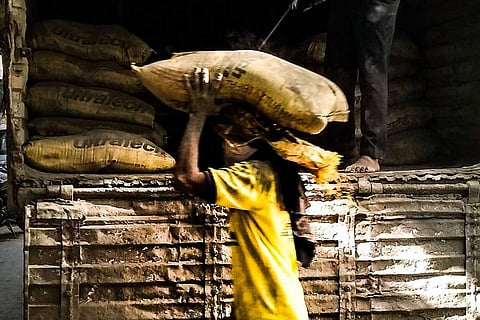

In the run-up to Bharatiya Janata Party’s (BJP) victory in the 2019 Lok Sabha elections, the party made a slew of promises in their manifesto, the most prominent one being the promise of a respectable living for daily wage labourers in the next five years. The manifesto also claimed that there has been a 42% growth in the national minimum wage, but this could not be further from the truth, cites a report on unemployment in India by the Bahutva Karnataka. The Karnataka-based citizens’ forum, in its findings, says that the average weekly wage for regular-wage workers and self-employed workers has remained stagnant from 2011 until 2022.
The report also probes the claims made by the BJP and Prime Minister Narendra Modi by analysing government data from the Periodic Labour Force Survey (PLFS) and the now-discontinued employment-unemployment survey.
In 2011, a male regular wage worker would earn an average of around Rs 3000 per week and a female regular wage worker would get a little above Rs 2000. In 2022, a male regular wage worker had an average income of Rs 2791 per week, while female wage workers got an average of Rs 2135. Male casual labourers received nearly Rs 1000 per week in 2011, while female casual labourers got half of that amount. In 2022, the male casual labourers received an average weekly wage of Rs 1216 while the female labourers got around Rs 704.
The average weekly wage for a self-employed urban male in 2017 was around Rs 2800, while it was Rs 1500 for a rural male. For urban females, it was a little over Rs 1000, while for rural females it was a little more than Rs 500. In 2022, all of these amounts witnessed a small increase. “On the face of it, being self-employed sounds good but in reality, well-paying jobs with social security have shrunk and people are forced to resort to low-paying self-employment options,” the report states.
An expert committee on wages, led by Anoop Satpathy, formed by the Union government in 2019 recommended that the National Floor Level Minimum Wage (NFLMW) in India should be increased to Rs 375 per day. This was calculated based on the amount of money needed to ensure a balanced diet for each individual. Congress President Mallikarjun Kharge recently announced that they would increase the NFLMW to Rs 400 per day if their party is voted to power in the upcoming Lok Sabha elections.
According to the Bahutva report, one out of two regular wage workers, nine out of 10 casual wage workers, and three out of five self-employed workers earn less than the national minimum floor wages. “In absolute numbers, nearly 30 crore people are earning less than the national minimum wages,” the report adds.
What can be done to avert further crisis?
A recent report by the International Labour Organisation (ILO) and the Institute of Human Development (IHD) cited how 83% of India’s youth are unemployed. The India Employment Report 2024 also states that the number of youngsters who do not have a job despite completing secondary or higher education has almost doubled from 35.2% in 2000 to 65.7% in 2022.
Commenting on how a person can be economically productive, the Bahutva report states that a hungry person, somebody with ill health, or lacking adequate education cannot be economically productive. This highlights the need to spend on health and social security measures.
“Wage stagnation and high levels of inequality are not only at odds with ethical and constitutional goals but are also detrimental to economic growth,” the report states, and lays out the following parameters through which the problem can be resolved:
Right to food for all
Right to employment with living wages and timely payment of wages for all
Right to free and quality healthcare
Right to free and quality education
Right to pensions
According to the report, these would require a total allocation of 10% of the GDP for social security. In the 2024 Budget, the Union government allocated a mere 0.40% of the total GDP for five social security schemes: Mid-day meals, Integrated Child Development Services (ICDS), Pradhana Mantri Matru Vandana Yojana (PMMY), National Rural Employment Guarantee Act (NREGA) and National Social Assistance Programme (NSAP).
In addition to the current sources of funding, Bahutva Karnataka also recommends a wealth tax of 2% and a 33.3% inheritance tax on the top 1% of the population to increase the allocation for social security.
But when asked about India’s unemployment crisis, Chief Economic Advisor V Anantha Nageswara recently stated that the government’s role in reducing unemployment is limited and that it would be incorrect to think every social and economic challenge could be solved in such a way.